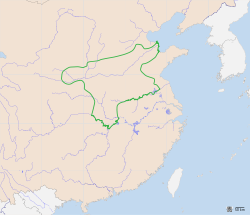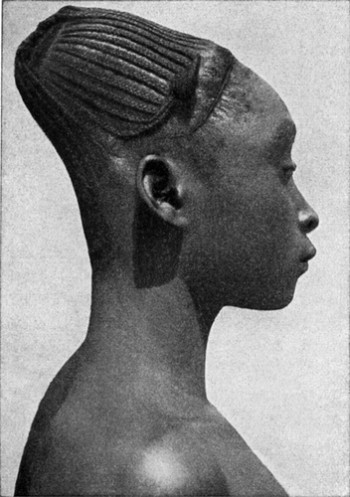The true Mongoloid,the modern Korean,Japanese or Chinese is theorised to have appeared not before 8000 bc,buty no later than 3000 bc. Who was there before?
Blacks have been present here since the earliest Out of Africa migrations some 60 kya. In fact the Stone Age Andamanese off India's southern tip are genetically closer to Japanese than even Chinese or Koreans.
Officially Japanese is s language isolate,meaning though it has many Korean and Chinese loanwords its not a derivative of either. Neither is it a sprachbund,a language compromising similar ones in the same region.That surprises no bantu speaker. Japanese/bantu names are often similar. Here are a few personal names shared by both,though pronunciation may vary.
Kubo,Kioko,Kenichi,Nagumo,Okubo,Tanaka,Takano,Magero etc etc. Looking closer one finds a degree shared structures;both follow the Subject Object Verb rule using agglutinatives and contain many near identical phrases and words. The number of vowels is the same,theres no gender specificity in the noun or verb conjugation and l and r are interchangeable.
30 years ago,a researcher identified Tamil as the possible source of Japanese.
Fourth, while dictionaries in other Dravidian languages are small and simple, there is a large Tamil lexicon. Published in 1936, the Tamil Lexicon consists of seven volumes compiled over a period of twenty years by a special committee at the University of Madras. It contains 1,04,000 word entries, giving ancient usages, indicating dialects, and detailed definitions. An additional reference I have used is A Dravidian Etymological Dictionary, edited by T. Burrow and M.B. Emeneau, which came out in 1960. A revised and enlarged edition appeared in 1984 (hereafter abbreviated DEDR).
These are the tools that make possible the accurate comparison of Tarn ii and Japanese as far as the meaning of words and grammatical features are concerned. The geographic neighbors of Japanese suffer from a dearth of documentary sources going back to earliest times. The oldest extant documents in Korean were produced in the fifteenth century, and those in Monoglian in the thirteenth century. The Ainu language does not have a writing system. This paucity of documents recording the ancient forms of the languages in the vicinity of Japan has been a major stumbling block in the study of the genealogy of Japanese. Tamil is extremely important in that its very old forms are known to us.
I travelled to South India in 1980 to continue my research, receiving invaluable aid from Ms. Rama Lakshmi and Ms. V.N. Balambal. On New Year’s Day the following year, I showed Prof. Jaroslav Vacek of Charles University in Prague a list of the word correspondences I had collected for Tamil and Japanese. He kindly took time out of his busy schedule to check over the list with great care. For one year beginning in the fall of the same year, I studied the reading of classical Tamil at the University of Madras under Prof. Pon. Kothandaraman. During the winter break I visited the Trichi district, his home village, and was able to observe the old Tam ii New Year’s celebrations.
http://arutkural.tripod.com/tolcampus/Japanese-tamil.htm
The reader will remember the original Africans known as the Dravidians/Veddoid, now known as Tamils. There is also it seems unmistakable Somali elements.
No where did I find information about the Somali language and the connection with the Japanese Language.
However there are many words that sound similar and mean almost exactly the same thing.
JAPANESE SOMALI (Northern Dailect/Somaliland)
Wakarimasu/Wakarta/Wagaranai Wagartay/Magaranay
-I understand/understood!/I don't understand - Understood! I don't understand
Hai - YES (affirmative) - Haye - Yes (affirmative)
* Niin - People/Men - Niin - Men
* YO - slang added at end of sentences - YO - slang added at end of sentences
ex. Wagaranai yo (I don't understand!) - Magaranai yo ( I don't understand!)
* Ima - right now, at this moment *ima/ima ku - right now, at this moment
* Chotto Matte - wait a moment * Joogso - wait a moment (these two both have the "choo, joo" root sound, prononciation)
* Shigoto - Work/company *Shiago - work company (pron: Shiako)
(Japanese) Hayai - Quick/Fast/Quickly refering to speed of obj./person
(Somali) Hayaay/Hayeey - Quick/fast/watch out, also refering to speed object/person
(Japanese) WA - I, me, used in sentence "watashi-wa" I AM
(Somali) WA - I, me, used in sentence "aniga wa" I AM
http://www.resistance2010.com/forum/topics...panese-language
The more one searches,the more African connection one finds.
Here are some place name and
name parallels with the Tiv,Igbo and Yoruba and Hausa of Nigeria.
Far East Asian Languages Are Near African Languages parallels A paper on Mande and Japanese relationship has been published. Unfortunately its copyrighted but here. http://olmec98.academia.edu/CWinters/Papers/302858/The_Relationship_Between_the_Mande_and_Japanese_Languages It shows phonetic and lexical correspondence between the 2. The genetic relationship between Japanese and Mande,a West African people who dispersed all over the Neolithic world indicates irrefutable African origins of Japanese.The god of the latter was Amon corresponding to the sun goddess Amaterasu. Apparently there was migration in the jomon times (10,000-300 bc)explaining why skeletons of that period had dental morphology similar to Indian and African teeth while the typical N.Asian sinodont appeared in the Yayoi era (300-300ad). China,like Japan has strong African links from antiquity. As far back as the Neolithic The fur-ther comparison of Neolithic Man with Modern Man in China (including inhabitants of Northern China, Fujian province and Hainan island) is made, also based on the main index values and total prognathism of skull, showing that the development of the physi-cal characteristics of Chinese is a genetic and successive course from Later Paleolithic Man to Modern Man via Neolithic Man. Thus, so-called Negro-Australoid racial traits, such as the narrow and long cranial pattern, heigh vaulted crania, lower orbit, wide nose and some projective prognathism (from the morphological observations), themsel-ves are intrinsic characteristics of Neolithic Man in China, only there is a little diffe-rentia in the degrees of display of these traits among groups.http://en.cnki.com.cn/Article_en/CJFDTOTAL-RLXB198602001.htm Here are examples of African skull deformation,which was practiced by the Africoid Shang,China's first major recognised culture based in the Yellow river Valley. http://en.cnki.com.cn/Article_en/CJFDTOTAL-KGXB197302007.htm Btw,skull binding was practiced as late as the 90s by the Mangbetu in the DRC. Here's King Tut's deformed skull on CAT scan,showing this was practiced by early Africans. One of the Shang confederacy,the Qiang (Rimai) of N.Szechuan were among the last to be fully assilimilated by the Han and left extremely interesting traces of their original language which have persisted until now. Their tonal type is more African than Chinese in 10 out of 12 respects ,specifically Dagaare ,spoken in Ghana as far as Burkina Faso. The language is of the Niger-Congo family related to-Mande,who I think we've met before. http://sinica.academia.edu/JonathanEvans/Papers/167301/African_tone_in_the_Sinosphere . Here are some excerpts The degrees of African-ness and Chinese-ness are evaluated, and African-style features arefound to be lurking throughout the Qiangic family. Similarities of word structure and wordlength between African and Qiangic languages are held responsible for the similarities..... A close inspection of the tone system of the Mianchi dialectof Southern Qiang (SQ) shows that its tone system behaves more like a prototypical Africanlanguage than it does like Chinese, even though the tone system arose under heavy influence...... As this paper was nearing completion, I was made aware of Hyman (2007 [forthcoming]),in which African tonal features are reported in Kuki-Thaadow, another Tibeto-Burman language........However,the most important bit can't be copy pasted. On page 13 entitled African vs. East Asian tone properties. Its a must read. KC Chang,foremost anthropologist of this era says in, The archaeology of ancient China ; "the liu chang skull has some morphological features comparable with Oceanic NEGROID CHARACTERISTICS" Page 33 Page 43,"the population in N.China and that in the South West and INDOCHINA had become sufficiently differentiated to be designated by the names Mongoloid and Oceanic Negroid respectively, even though both may have evolved out pf a common Upper Pleistocene substratum......." So dear reader,a continuum of African settlement and migration clear across Asia. Linguistically,culturally and skeletally they were indistinguishable from In March a geochemist prof.Sun Weidong at University of Science and Technology Heifei,Anhui province,eastern China indirectly corroborated many of these research findings when he revealed the ancient Xia dynasty had Egyptian roots. He also cited several ancient Chinese classics, at one point quoting historian Sima Qian’s description of the topography of the Xia empire — traditionally regarded as China’s founding dynasty, dating from 2070 to 1600 B.C. “Northwards the stream is divided and becomes the nine rivers,” wrote Sima Qian in his first century historiography, the Records of the Grand Historian. “Reunited, it forms the opposing river and flows into the sea.”http://foreignpolicy.com/2016/09/02/did-chinese-civilization-come-from-ancient-egypt-archeological-debate-at-heart-of-china-national-identity/ I've always known an early China/Africa link but what in my opinion is new is the suggestion of a direct journey from Egypt to China and not a slow multiple generation trans Asiatic migration. The former seems the case especially when the chemical composition of ancient Chinese and Egyptian bronzes are identical. He conceived of this connection in the 1990s while performing radiometric dating of ancient Chinese bronzes; to his surprise, their chemical composition more closely resembled those of ancient Egyptian bronzes than native Chinese ores.The truth will always out and its heartening to know though this info has been known for decades its finally coming into the mainstream. Related: http://karanjazplace.blogspot.co.ke/2012/09/the-secret-histories-of-black-people_10.html http://karanjazplace.blogspot.co.ke/2012/09/the-secret-histories-of-black-people.html http://karanjazplace.blogspot.co.ke/2012/09/the-secret-histories-of-black-people_17.html |







Most of the above is complete nonsense.
ReplyDeleteMany people (including me) have noticed similarities between Japanese and some African languages during my research, but there is absolutely no hard evidence of this being factual or even tenuous.
The Japanese language as you yourself state above) is an isolate language and has no derivation that can be substantiated.
---
"Since the late nineteenth century, various proposals have been made to link Japanese with any number of other languages, such as Basque, the Chinese languages, English, Sumerian, various West African languages, and others. These have all been discredited."
http://www.gojapango.com/japanese_language
http://www.gojapango.com/japanese_language/japanese_language_classification.htm
Sir,there is genetic evidence as seen in the photo of the Stone Age Andamanese off India's southern tip are genetically closer to Japanese than even Chinese or Koreans.
ReplyDeleteSupporting evidence is skeletal,dental,cultural and linguistic in not only Japan but the wider N.E Asia region including China. Did you notice the linguistics paper comparing Mande and Japanese and the numerous similar W.African place names?
cool
ReplyDeleteLook up Y DNA Haplogroup DE and Mtdna Haplogroups M and N and that will show you why Japanese is similar to Nigerian language's!!!!
ReplyDeleteThanks. The evidence is overwhelming. Checking now.
ReplyDeleteRgds